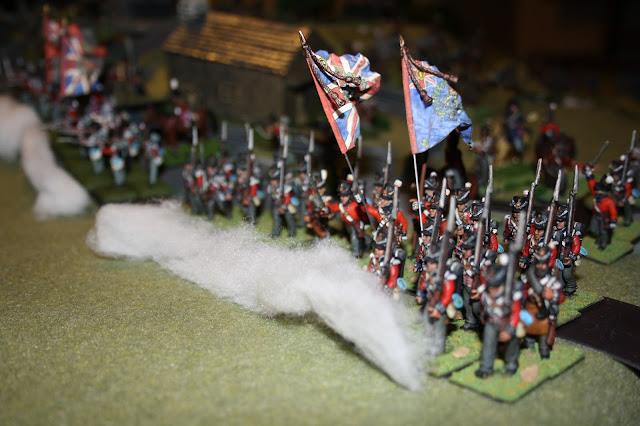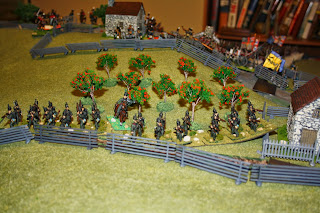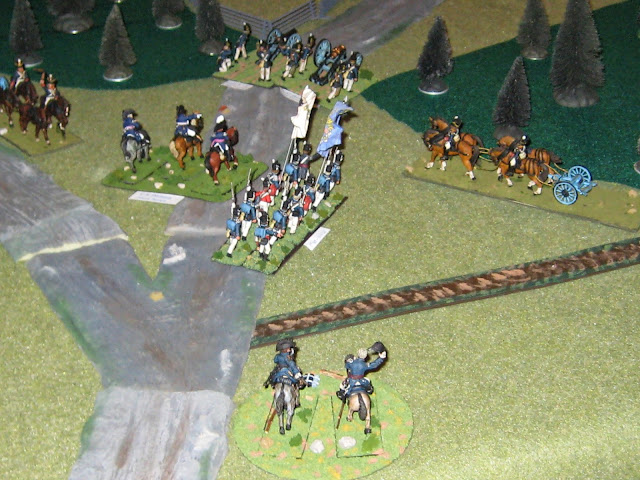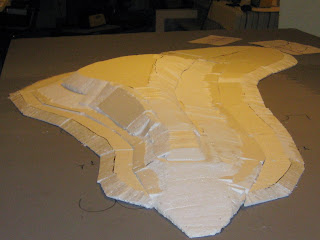The Battle of Lundy's Lane
Fourth Session
2230 - 2310
A lot of maneuvering in race for an advantageous position before darkness at 2250. As a result an increase in combat and resulting casualties, which forced several morale checks and resulting retreats and routs.
On the American right flank the 11th and 22nd regiments of Scott's Brigade battle it out with 1st Foot and the 89th Foot. Both sided suffer significant casualties. The 25th regiment is in reserve behind the Ritchie's guns, while the remnants 9th hold in the rear. One of Ritchie's guns has suffered 75% casualties so is not likely to remain on the battlefield much longer.
Ripley;s brigade has steadily adcanced uphill but a suffered many casualties. The 21st has suffered a retreat that forced it to interpenetrate the lines of the 1st regiment disordering it. On the left of the aforementioned regiments , the 23rd Regiment appears ready to advance have forced (with help of Towson's guns on their left flank) the GLI to retreat.
A view looking north. The 8th Foot (left foreground) snaking its way down towards Porter's Brigade. Just north of the 8th is GLI in its retreat position just ahead of the IMUC. Center top the British guns have manged to hold off the Ripley's advancing brigade with the help of part of the 89th Foot and Lincoln militia.
Porter's Brigade tries to advance in the dark (dark reduces visibility to 12" inducing a 1D6 roll to determine a random direction). Hence the odd direction of the N.Y. Volunteer regiment on the right. In the mid distance right is the 104th Foot and the 8th Foot snaking their way down the field. To left in the distance is the 103rd Foot hugging the fence line. Further left in the light woods is the Light Company of the 104th. Further left on the road (avoiding the random D6 roll) is the 19th Light Dragoons.
A close up of the 1st Royal Scots volley against the American First Brigade. The 89th Foot are to the right of the 1st in left distance.
A close up of the 22nd and 11th regiments about to give a volley in return.
The 89th divide their fire between the American 1st and 2nd Brigades while the Lincoln militia support the British guns. Ripley's Second Brigade is in the distance on the upper left.
An overall look at the battlefield with view SSE from the British perspective. Will the guns be effective with the reduced visibility? Porter's Brigade has yet to engage in combat with the steadily advancing but snaking way of Scott's British Brigade. On LL hill, the British and Canadians are managing to hold off the American advance but with considerable casualties. The Americans are making advances but are also suffering heavy casualties. Can they maintain the momentum in the face of two unit retreats or will they have to re-group before another assault?
The Fifth Session will begin at 2320 in the dark.
The Fifth Session will begin at 2320 in the dark.
















































